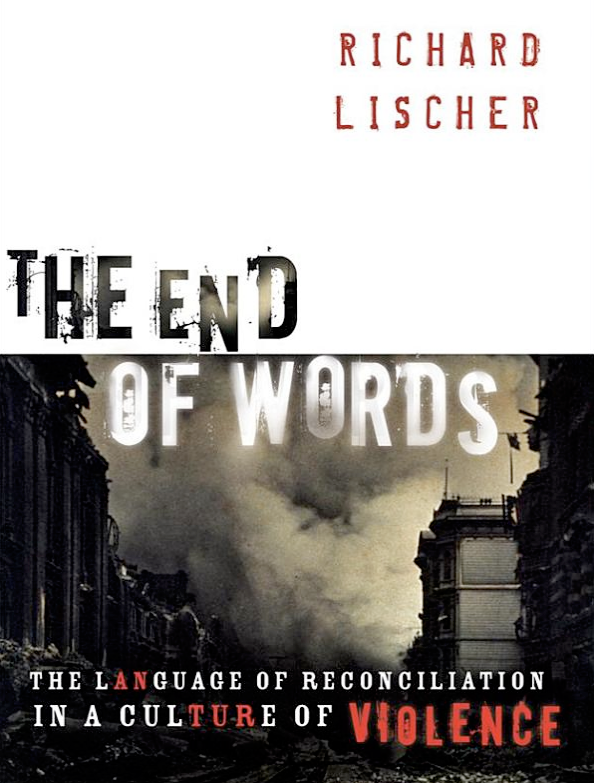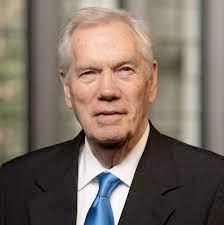
Co-missioners,
Today’s contribution is about preaching. It comes in the form of a book review by Bruce Modahl for which a bit of background might be helpful.
In 1871 Yale Divinity School inaugurated an annual series of lectures on preaching named after a famous Yale alumnus, Lyman Beecher. Beecher was one of America’s superstar Protestant clerics in the first half of the nineteenth century. His children included an equally renowned son, the Rev. Henry Ward Beecher, and an even more famous daughter, Harriet Beecher Stowe, the author of Uncle Tom’s Cabin.
Over the decades the Lyman Beecher Lectures on Preaching have featured speakers—preachers, theologians, teachers of preaching—who are also widely known and honored in the mainline Protestant circles that Yale Divinity School represents. A few Lutherans have been among them. This includes the lecturer in 1999, Richard Lischer, then a professor of homiletics—these days a professor emeritus—at Duke Divinity School. Lischer is an alumnus of Concordia Senior College, Fort Wayne, and Concordia Seminary, St. Louis (class of ’69). He earned a Ph.D. in theology at the University of London. He began teaching at Duke in 1979 after serving parishes in rural Illinois and Virginia Beach, Virginia. He is presently on the clergy roster of the ELCA.
Lischer’s Lyman Beecher Lectures were published by William B. Eerdmans in 2005. This is the book that Bruce reviews here. As Bruce will observe, it merits attention not only from preachers, but from those who care about preaching. That includes all of us, we assume.
Peace and Joy,
The Crossings Community
A Review of Richard Lischer’s The End of Words: The Language of Reconciliation in a Culture of Violence (Grand Rapids, MI: William B. Eerdmans, 2005)
by Bruce K. Modahl
Professor Fred Danker paraphrased Jesus when he told his class, “If any among you do not own a copy of the Septuagint, go and sell all you have and buy it.” “It” being the two-volume translation of the Old Testament into Greek.
Paraphrasing Dr. Danker, I say, if you don’t own a copy of Richard Lischer’s book The End of Words, go and sell your copy of the Septuagint and buy it. My advice extends to all who preach or care about preaching.
Lischer’s book is worth the price because what he writes is revolutionary. He relocates our pulpits, placing them at the consummation of history. Preach from there, Lischer tells us. Then, he shows us how.
The End of Words seems a strange title for a book about preaching from a man who teaches the art of preaching. The end Lischer has in mind is the purpose or goal to which we preach. It is not an ending of our construction, but the ending God has constructed for the consummation of history. Lischer places a quotation from T.S. Eliot at the head of his preface: “The end is where we start from.” Our starting point is a step beyond death’s boundary, in God’s new, or, as I would argue, God’s completed creation.
In the body of his preface, Lischer flags Jesus’ inaugural sermon as evidence. He writes, “When Jesus began his ministry of preaching, he did so using the language of the end of history.” Jesus quoted Isaiah, “The Spirit of the Lord is upon me, because he has anointed me to bring good news to the poor. He has sent me to proclaim release to the captives and recovery of sight to the blind, to let the oppressed go free, to proclaim the year of the Lord’s favor.” Then he turned to the hometown crowd and said, “Today this scripture is fulfilled in your hearing.”
We don’t know the details, the furnishings, and the geography of God’s kingdom, but we do know its outline. Isaiah tells us more. On the day of the Lord, he will host for all people a feast of rich food and he will swallow up death forever. Isaiah says on that day predator and prey will live in peace. The prophet Micah says that on the day of the Lord nations will beat their swords into plows. At the end of the Bible’s final book, John sees a vision of a new heaven and new earth in which God will wipe away every tear. Death will be no more; mourning and crying and pain will be no more, for the first things have passed away. The Evangelists devote about a third of their Gospels to holy week. Jesus dies and rises to new life. Resurrection from the dead is the promise of the kingdom of God. Lischer has a one-word summary for all the descriptions of the end. He gives us hints along the way, but he makes us wait until the end before he reveals it.
Lischer’s first chapter is titled “The Ultimate Vocation.” He says we must die to enter a vocation. That is what distinguishes it from a profession. God initiates his call to us at the baptismal font. There we die with Christ and rise with him to newness of life. The vocation extends to all the baptized.
What dies in the act of preaching is any preoccupation with self and the scavenger hunt for novelty. What rises is “the synergy of the spoken word with the life of the baptized.” Lischer goes on to make two stunning claims: “Preaching is the ultimate vocation because it will save the lives of others.” And, “That there is such a vocation in this world means there is hope for us all.”
Lischer’s second chapter is titled “Interpretation: The Final Edition.” The final edition is Jesus’ rereading of Isaiah from the perspective of the end of history. Paul and the Evangelists do the same. Lischer quotes Luke Timothy Johnson who urges us to be less concerned about the world that produced scripture and learn to live in the world scripture produces.
We read the Bible evangelically, says Lischer. In so saying, he reclaims a word that belongs to all Christians. The evangel is the gospel, the good news about God turning toward us in Christ. With a reference to his former teacher, Robert Bertram, he says that “when you read the text in such a way that it necessitates Christ, then the purpose of Scripture is clarified.”
Lischer’s chapter titles advance his claim that we preach from the end of the story, and this pattern continues in his third chapter, which he calls “One Last Story.” The last story, according to Lischer, is the true one in a world filled with lies. It is true to the unfinished quality of our lives and the world in which we live; true to the chaos; true to the church’s rich life; and true, above all, to the one we acknowledge in the eucharistic prayer: Christ has died, Christ is risen, Christ will come again.
Lischer says all sermons have a plot in which the narrative of our lives is taken up into God’s story. Lischer insists narrative is not a collection of illustrations. Pull the illustrations out of a sermon and we realize the illustrations are not necessary.
Lischer proposes three narrative alternatives to illustrations. The third alternative and the one I find most compelling is the use of a master metaphor. The master metaphor functions as the controlling image guiding the sermon’s plot. Lischer refers to Aristotle as the one who said that a metaphor whispers, “It is/It is not.” Lischer offers Jesus the Good Shepherd as an example. He is our good shepherd but no, he did not hold a staff to guide sheep to green pastures. That metaphor must have shocked those who first heard it. A more contemporary example comes from the musical “Godspell,” in which Jesus is portrayed as a clown. He is not. But when we read Paul talking about the foolishness of the cross, we might reconsider.
Lischer asserts that in our preaching we speak into existence a new reality. More than once he says, “The cure for pulpit dullness is not brilliance but reality.” We preach a bigger reality, the one that endures, the one we may see only dimly, but we see it nevertheless. It is the completion of creation at the end of history. This reality transfigures everything the world calls real.
At the beginning of this review, we heard descriptions of the end from Isaiah, Micah, and Revelation. I said Lischer has a one-word summary for all these descriptions. Finally, he discloses it in the title of chapter four. The word is reconciliation. Reconciliation is the end toward which we preach. Lischer writes,
I am seeking the true end of words, which is the ultimate purpose of preaching. I am looking for the animating principle, the life of the thing itself, but also the larger thing in which all our little speeches fit. I find it in the thesis sentence of the New Testament, 2 Corinthians 5:19: “God was in Christ reconciling the world to himself, not counting their trespasses against them, and has entrusted to us the message of reconciliation.”
First, God has reconciled us to himself. Second, God in Christ reconciles us to one another. Third, through Christ, human beings are reconciled within themselves.

Lischer points out that the Greek word for forgive is aphiemi. Its first meaning is send away. God sends our sins away the same way we send things from our computer screen into the trash bin, never to be seen again. That is the image Lischer uses. He goes on to say that we are not meant to be like Christian in Bunyan’s Pilgrim’s Progress, weighed down by the sins he carries on his back.
Here, I take issue with Lischer. We can send things to trash and empty the trash bin. But the trash hasn’t really gone away. A forensic IT person can find it lurking somewhere in the inner workings of our computers. So also with sin in our inner workings.
Yishai Sarid’s book The Memory Monster is about a holocaust scholar. He leads tours of the holocaust sites in Germany and Poland. He knows the statistics of how many Jews were killed and how they were killed in every camp and wooded graveyard. He holds these memories until they become for him a monster.
Memories can be such a monster for us. Time and again people have sat in my study saying they know God forgives them, but they can’t forgive themselves. I know that such people often leave our studies with the message that they are not trusting in God’s forgiveness. They have placed their trust in their own ability to be right. So, we send them away with one more thing to feel guilty about. Forgive us Lord, for the times we have placed this load on the backs of others.
The theologian Bruce Springsteen’s song “Across the Border” has a line that gives solace. He sings, “Pain and memory have been stilled, there across the border.” That line, like the rest of the song, is sung from the end of time. It gives hope. Someone has defined hope as what exists between what is and what will be.
There is a seam between our inability to be graceful with ourselves and God’s gracefulness with us. That is the grace-filled place where God works reconciliation within us and the place where hope takes root. Even so, come Lord Jesus.
Thursday Theology: that the benefits of Christ be put to use
A publication of the Crossings Community





You must be logged in to post a comment.